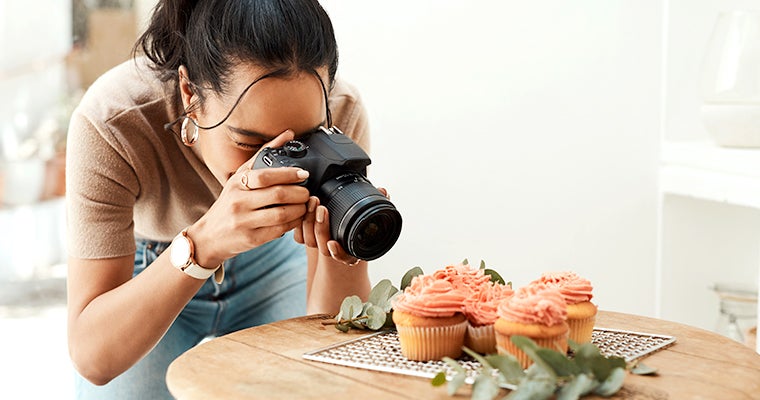Vibrant images attract customers and add life to your brand.
Pictures speak a thousand words, so make sure the quality of your social media food photos doesn’t tell a story you’ll regret.
Tight budgets prevent many business owners or chefs from hiring a professional photographer or food stylist. With today’s advanced smartphone camera technology, helpful editing apps and some professional advice, it’s possible to make your artful menu specialties as appetizing online as they are on the plate.
We asked experts for their tips to help you get the most from DIY photos you post online:
Focus on lighting
Use natural light and avoid overhead lighting, says Shelly Waldman, a professional photographer based out of the San Francisco Bay area. “Take your scene and put it next to a window, you’re immediately going to have better light than in the kitchen.”
Direct sunlight can cast sharp shadows, and for that Waldman has a remedy: Diffuse the light by hanging a white tablecloth in the window or by taping wax paper to the window. She notes that not all shadows are bad. They create shape and depth every image needs.
Build your set
Photography is an opportunity to tell a story about your food, says Gordon Food Service Graphic Designer Leah Day-Sanderson. “Are you a barbecue restaurant? Do you have wooden tables? Don’t shoot everything on white if that’s not who you are.”
Those wooden tables or a scattering of fresh ingredients around your hero food image can reinforce your brand. Being intentional with your set showcases what makes you special. “Be purposeful—don’t just make a dish and take a picture of it,” Day-Sanderson says. “Make more than one dish of the same thing and take the one that works best, because it won’t always be right the first time.”
Add a little pizzazz
When on set, your food needs to look its best. A spray bottle with water for misting provides a sheen that makes meat appear juicier or beverages appear colder. And a lint-free cloth is handy for removing stray droplets or fingerprints.
No food photo is complete without accompaniments. A burger looks better with fries or onion rings. A plate stands out with a napkin and utensils. And don’t forget garnishes.
“Garnishes are your friend,” Waldman insists. “A toothpick in the burger, a drizzle of oil or cream on soup, croutons and cheese on salad … but be thoughtful: a little garnish goes a long way so don’t overdo it.”
Use the right tools
One of the easiest ways to improve images taken with a smartphone is to turn on the grid and the level on your camera. Doing so creates a level plane and less distortion when shooting top-down images, Waldman says.
The grid helps novices with a photography basic—the rule of thirds. The off-centre area where grid lines intersect are focal points and should include key elements of the photo. If you choose symmetry, make sure everything is perfectly aligned. One off-centre element is distracting.
Another simple improvement is to make sure your phone is set to take high-resolution images, Day-Sanderson points out. The better quality you have at the start, the more editing you can do. And when it comes to editing, Waldman suggests apps like Snapseed or Lightroom to punch up the vibrancy or bring down the shadows.
Share on social media
Once you have images you like, it’s time to share. But that can be a little intimidating, especially if your competitors are strong on social media. Don’t worry, says Luke Ferris, a Digital Marketing Specialist at Gordon Food Service. “Remember that social media comes down to sharing information.”
Don’t be shy about sharing visuals, he advises. Enticing food photos are great, but they’re not the only possibility. “Overselling your products with high-quality images that don’t look like the food you serve can hurt you. If you don’t have time to take a photo of your food, share a photo of your specials menu on a chalkboard—sometimes it’s helpful just to get the word out that you’re open.” Posting images of special occasions, upcoming musical acts or local celebrities eating your food builds an emotional connection with customers.
When it comes to food photography, Ferris echoes earlier advice. But he also encourages having customers post authentic photos of your food. “Make sure your social accounts are on your menu and on your door,” Ferris says. “Celebrate that people are enjoying your food, talking about it, and sharing it with friends.”










